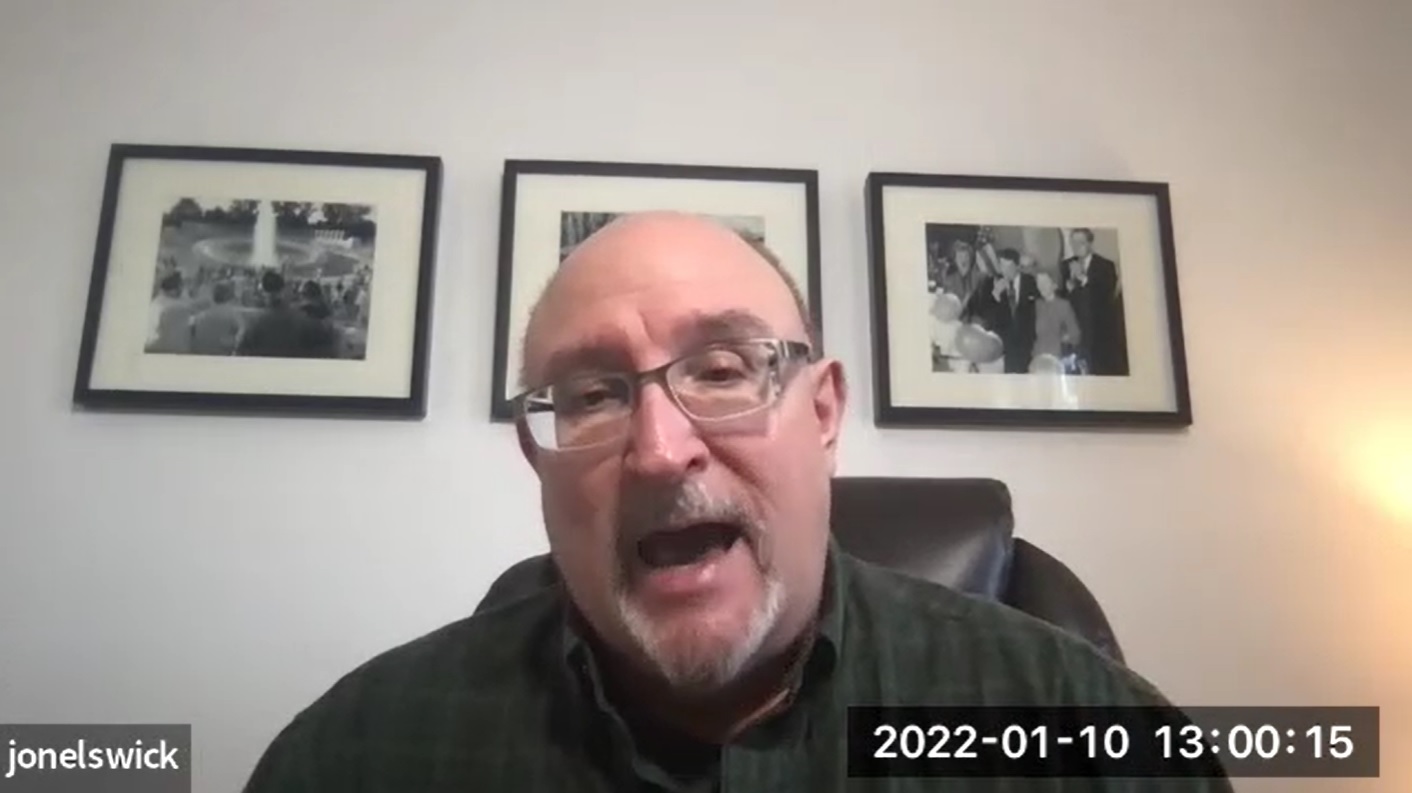On Monday, Harker journalism students spoke via Zoom with Jon Elswick, the Associated Press photo editor based in Washington, D.C., whose team covered the riot at the U.S. Capitol on Jan. 6 of last year and received a Pulitzer Prize for their coverage of the murder of George Floyd and the national reaction it received.
Elswick briefly surveyed his career as a photojournalist, which began in Chicago, where he mainly covered sports teams such as the Michael Jordan-era Chicago Bulls, and later moved to Washington. When the George Floyd protests erupted in the summer of 2020, Elswick worked in Washington, receiving and editing photos submitted to him by AP photojournalists from across the country, including the images that won his team the Pulitzer. “We had photographers from really all over the country,” he said. “Two of our photographers in Washington took photos that were part of those entries, and I happened to be editing both of them.”
On the day of the Jan. 6 riots, Elswick was one of three AP photo editors in Washington, D.C, “which doesn’t seem like very many, and it’s not very many,” he said. “Up until about a year and a half ago, there were only two of us here in Washington.” Elswick said his team didn’t predict there would be violence, but nevertheless made sure to have the right people in place. Two photographers specializing in protest and riot coverage – one of which was Julio Cortez, who recorded one of the George Floyd protests’ most famous images – were in Washington to cover the rally that led to the riot at the U.S. Capitol. “We didn’t know what was going to happen, but those photographers that specialize in this, we provide them vests, helmets, masks, just things to keep them safe,” said Elswick, who emphasized that photographers are not sent alone to events that may become violent. “They’re always paired up, because while they’re both shooting, they can both watch each other’s back.”
AP also had photographer Evan Vucci in the “tight pool” of media crew who followed former President Donald Trump to the rally, and “back stand” photographer Jacqueline Martin at the site of the rally. “This is pretty typical coverage for what AP does with any big campaign event,” Elswick explained. “The back stand photographer gets there and … they’re on the back stand further away from the stage.”
Elswick recalled that AP had a pair of photographers each at the site of the rally and at a place near where the rally took place. A last-minute decision was made to send another staff photographer with a freelancer, who were given the task of heading to the Capitol after Trump was heard saying a protest would be taking place there.
When he noticed that crowds outside the Capitol Building were becoming violent, Elswick began contacting the photographers placed in building, one of which was Andy Harnack. “I said, ‘Hey, get to a window where you can see something. What’s going on outside?’” he recalled. It was hard to keep up with what was going on, but I had the other photographer, Manny Ceneta, in the Statuary Hall.” Elswick instructed Ceneta to make his way to the north end of the building. “And almost immediately when he got over there, he started encountering protestors, smoke, smoke bombs, pepper spray,” Elswick said.
Elswick, who was working from home at the time, recalled telling his wife as the event unfolded, “You’re not going to believe the pictures I am just seeing.” While it was common for photographers and photo editors in Washington to see Secret Service members and response teams carrying weapons, “We don’t see these police officers drawing their weapons, and these were all pretty much plainclothes capitol police security, whether they would be security for the House leadership or just regular undercover or plainclothes officers. They all had their firearms out and pointed to the door.”
As soon as they were able, the photo editors confirmed the safety of the photographers, one of whom, Scott Applewhite, had been locked in the Senate chamber. Despite the chaos of that day, the team never lost sight of their objective. “We just knew what we needed to do was to get the pictures out, and let the pictures tell the story and get them linked to the stories that the reporters are doing,” Elswick said. “Finally, the photographers got back into the capitol and the business of certifying the election continued and finished at three in the morning.”
